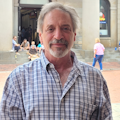Are shop metrics and KPIs (key performance indicators) really that important? In the shop, they could make all the difference in reducing inefficiencies and ultimately in reducing maintenance expenses, so they are quite important, according to Mike Palmer, VP of fleet services at Estes Express Lines.
The 36-year trucking veteran explained that tracking technician KPIs and metrics provides insight into what is happening in your shops and with your technicians, both the good things and areas that need improvement.
“They expose weaknesses and places where you need to make more effective decisions, such as possibly outsourcing some services—and they point to what you’re doing best,” he stated.
“It’s all about uptime in a highly competitive freight market, while across the industry technician labor rates have gone up,” Palmer added. “On top of that, there is a growing amount of new technology on trucks which requires more advanced skill sets for diagnostics. When you use metrics and KPIs effectively to improve efficiency and productivity, the savings go up as well, but today, the stakes are even higher.”
The Richmond, Virginia-based freight transportation and services provider has 98 shops and more than 800 technicians, so improving certain KPIs across the board can have a huge impact. One is how they are spending their time.
“When you look at technician labor, the easiest metric to track is the number of hours a person is working,” Palmer said. “But that hardly tells you the whole story. Technician and—by extension—shop productivity and efficiency are seen more closely in a comparison of how much time is being spent on direct and indirect labor. In other words, what percentage of the hours a technician works is spent working on vehicles compared to other things, such as cleaning the shop, chasing parts, or handling clerical duties.”
While each fleet service operation will have to set their own goals in that regard, Palmer related that in his experience, a good target is 92% direct labor. Additionally, a closer look at what makes up the indirect labor portion of a technician’s time can tell you if there is a need for other types of personnel like shop helpers or parts staff. It comes down to knowing exactly what your technicians are doing when they’re in the job for eight or more hours a day.
“Beyond that equation, digging deeper into technician productivity requires incorporating standard repair times (SRTs) into your analysis,” Palmer explained. “Measuring technician time for services performed on tractors, trailers, converter dollies, and forklifts provides the kind of in-depth analysis you need to see what’s happening in terms of the actual time it takes to do a specific job compared to a set amount of time.”
He stressed that the most effective way to do this is by auditing work orders.
“Audits keep it real because weekly reports showing work orders that were closed allow for an analysis of metrics based on job codes and reveal outliers where training and corrective action are required by having foremen walk through the issues with technicians,” Palmer explained. “Repeating the process over and over until scores improve is what leads to higher levels of productivity and efficiency.”
Comparing data
With maintenance programs aimed at maximizing the utilization of equipment for a range of different customers, leasing and service provider Transervice uses varying fleet maintenance systems from one operational site to another based on customer requirements, noted Mark Finger, Transervice VP of operations. For a higher-level view of several performance metrics and KPIs, he said the company utilizes business intelligence platforms to aggregate data.
“Preventive maintenance inspections are at the top of the list relative to volume and account for a significant amount of labor hours,” Finger said. “Conducting internal time studies for varying categories of equipment that are composed of a broad range of manufacturers and models enables us to develop average SRTs for PM performance that our managers review as each repair order is closed.
“The benefits of this one particular assessment have also helped ensure that only time spent on the PM is allocated to that task, and all other ancillary repairs are captured under the applicable VMRS codes,” Finger added.
Finger noted the most significant metric for technician efficiency management at Transervice is comparing actual repair time (ART) to SRT.
Read more: How to avoid pitfalls and get results from your KPIs
“Comparing ART to SRT by technician for the highest volume repairs and tasks creates a stacked rank,” Finger related. “That spotlights areas of opportunity for training technicians who are performing below the average and a review of practices and processes for technicians performing above the average. We also conduct time studies for high-volume tasks that either do not have a published SRT or require setting a baseline for a company standard.”
Focus on quality
Kevin Clark, AVP of shop operations, Fleet Services by Cox Automotive, said being hyper-focused on efficiency requires monitoring maintenance quality by tracking the number of findings on each PM by technicians.
“Our managers also complete quality control inspections after a technician has completed a repair or maintenance operation,” Clark related. “We find that’s a good way to address performance issues as they relate to repair quality, identify training opportunities, and open the door for coaching or recognition of a job well done.
“Our Emergency Mobile Service technicians are also measured on call acceptance rates and ETA on-time percentages,” Clark added.
He noted performance metrics also help empower technicians to learn and grow.
“One way we do that is through quarterly progress checks that are a part of our performance management process,” Clark said. “Our managers and technicians set short- and long-term goals at the start of the year and then have conversations throughout the year to discuss their progress toward meeting those development and performance objectives.
“Those conversations help provide our technicians across all experience levels with the tools they need to continue learning new skills,” he continued. “And through objective metrics, we can provide transparency between technicians and managers. Together, they can identify opportunities for improvement and create a plan to achieve their goals.”
Continuous improvement is something that Cox Automotive technicians strive to achieve. “One of the ways I track myself and the technicians I oversee is with a spreadsheet on daily hours billed versus labor rate,” Levi Stegemoller, lead mobile diesel tech 2 for Cox Automotive Fleet Services, explained. “A clear picture of parts and labor costs and hours worked tells us how we’re performing on the job and shows where there are opportunities to improve.”
Jeffrey Nichols, sr. mobile diesel tech at Cox, tracks performance based on feedback from customers. “Continued learning also comes from watching industry technology trends and searching out ways to learn about new technologies on vehicles, such as talking with other techs about new systems,” he said.
“I try to stay focused on a job and complete it safely and correctly the first time,” said Michael Colt, lead diesel maintenance tech for the Colt Group. “It’s always faster to not have to do it twice. If I find something I don’t know the answer to, I learn everything I can about it.”
For Dillon Grimes, sr. mobile diesel tech, Cox Automotive Mobility, efficiency is a big part of performance. “I track that based on our standards of how long a job took versus hours billed, and if I wasn’t as efficient as I could be, I review what I did and take notes on what I could do better next time,” he said.
At RWC Group, a Phoenix-based truck and bus dealership with 14 locations in five states, successful service management practices have included establishing a standard operating procedure (SOP) and a process for auditing compliance based on KPIs.
To facilitate service, RWC Group has been relying on Hino Edge and Isuzu Connect service management platforms driven by Decisiv Service Relationship Management (SRM) technology since 2021.
More recently, the dealership became an early adopter of SRM Discovery Status Tracker, a reporting suite that provides them with an understanding of service event time spent on check-in, estimate creation, waiting on parts, and more across their entire operation, including between departments, locations, timeframes, and within a single event.
With this status information, RWC Group is reporting improvements in key metrics:
- Overall cycle time for service from check-in to completion has dropped by 25% from an average of 14 days across the entire RWC Group to about 10 and a half days.
- The ability to dive into factors impacting dwell time has resulted in a reduction of 77% for check-in, which is a six-hour difference per service event.
“Our focus on achieving and maintaining best practices is continual,” explained Casey Scheirer, director of service, RWC Group. “With an SOP and KPIs, we’re able to manage and quantify how well we’re following the process and provide gap analysis to identify areas where we need improvement.”
About the Author

Seth Skydel
Seth Skydel, a veteran industry editor, has more than 36 years of experience in fleet management, trucking, and transportation and logistics publications. Today, in editorial and marketing roles, he writes about fleet, service, and transportation management, vehicle and information technology, and industry trends and issues.


